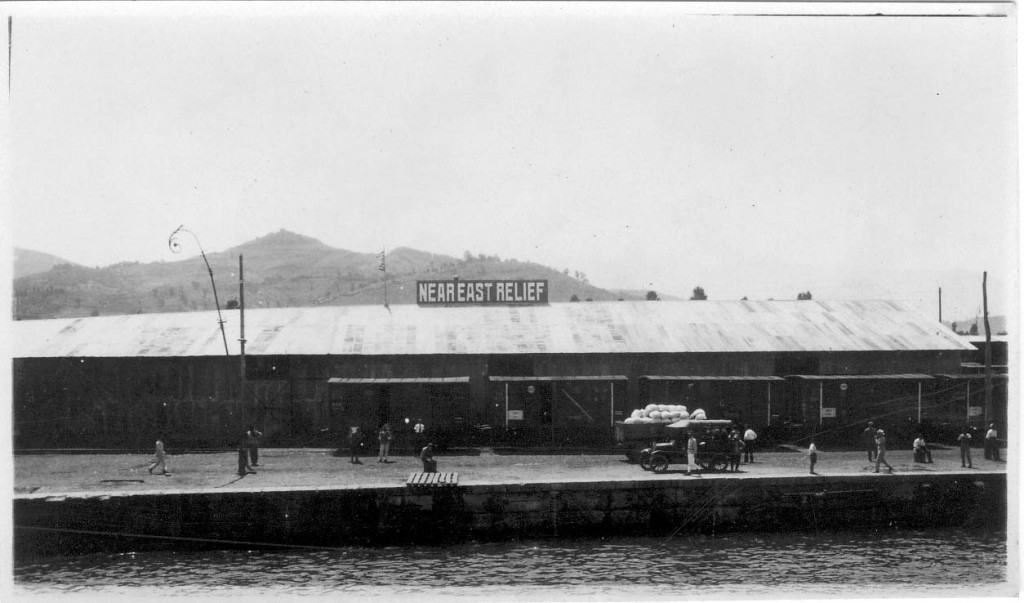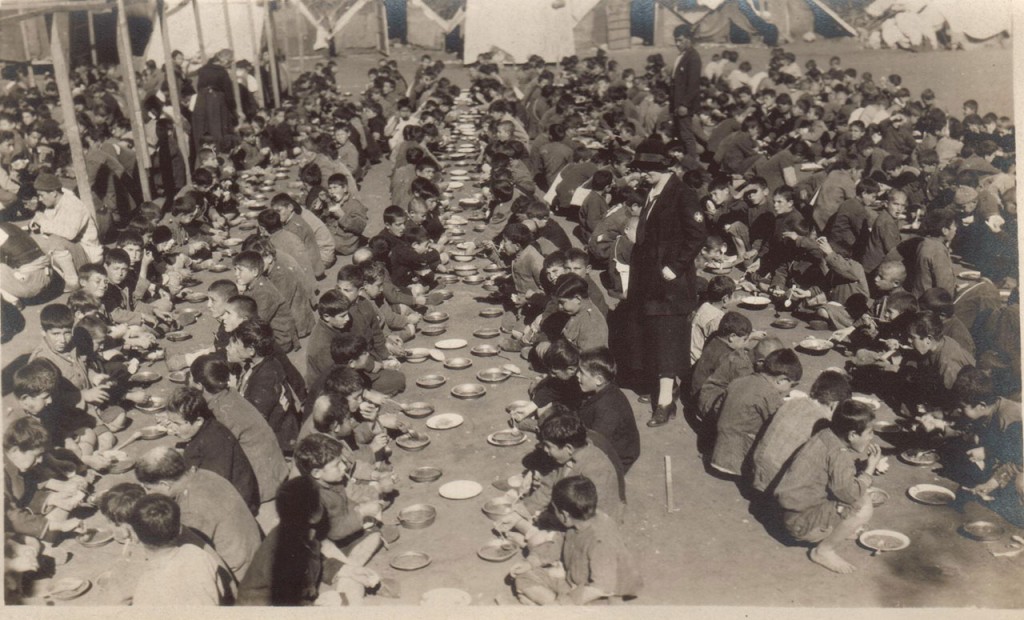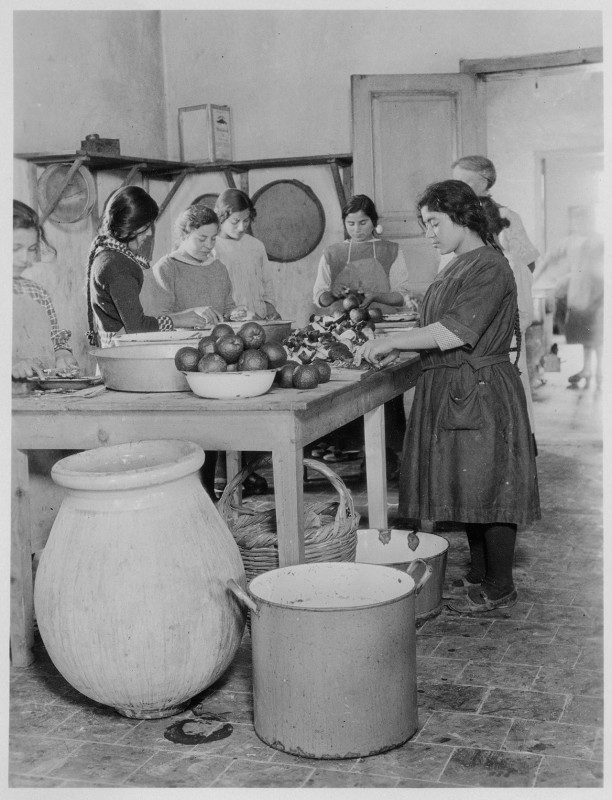Fighting Hunger

Refugees in line for food at a Near East Relief soup kitchen in Alexandropol, 1922.
Years of brutal conflict took a toll on agriculture in Asia Minor. With no seeds to plant and few able-bodied men to work the soil, food became increasingly scarce. Refugee women mixed precious flour with clay and straw to make coarse bread.
Children scavenged for potato peels and apple cores in the garbage. When even food scraps became difficult to find, the children resorted to eating grass for sustenance. Mothers and older siblings often went hungry so that smaller children might have a few more bites to eat.
In 1917, Near East Relief was operating eleven soup kitchens in Constantinople. Refugees in Constantinople camps received half a loaf of bread per person every other day. By 1922 the organization was feeding 20,000 refugees in Alexandropol, Armenia in addition to 18,000 orphans living in the orphanage complex.
The local food supply was so desperately limited that relief workers were forced to concentrate on feeding only the children. The situation improved slightly when World War I ended and overseas shipping became possible.
Near East Relief sent its first food shipment on the Mercurius on January 16, 1919. The ship contained 2,000 pounds of flour, 2,500 cases of canned food, and 500 cases of condensed milk. The Pensacola and the Western Belle quickly followed with a combined $3,500,000 worth of food and supplies. The U.S.S. Datchet (left) carried 4,500 tons of flour, rice, and beans in 1920.
Large American companies such as Campbell’s and Heinz donated vast quantities of canned food. Borden Eagle Brand donated condensed milk. The Hershey Chocolate Co. and the citizens of Hershey, PA contributed a combined 25,000 pounds of cocoa in 1922.
Smaller companies and individuals also played an important role in food relief. The Charles F. Mueller Co. and Foulds Milling Co. donated a combined 30,000 pounds of macaroni in 1922 – enough for 360,000 orphanage meals. H.O. Wilbur & Sons of Philadelphia, PA donated 10 barrels of cocoa in 1921.
American children were generous in their own right: the children of Brooklyn, NY donated an astonishing 40,000 cans of condensed milk in March 1922. Placed side by side, the cans of milk would cover two miles. Child actor Jackie Coogan’s landmark campaign delivered $1 million in food and supplies in 1924.

A Near East Relief supply warehouse in Constantinople

Once the food shipments arrived at ports like Constantinople and Batoum, relief workers transported the supplies over land as efficiently as possible. Workers on the “milk route” between relief stations in the Turkish interior used Ford trucks or and even camels through the rough terrain. Orphanages in Armenia and the Caucasus relied heavily on the Russian railroads.
Orphanage meals delivered the maximum number of calories for the smallest price possible. Relief worker Nettie Hall Austin implemented a rationing system in Samsoun with a food budget of $1.95 per child per month (about $25 in 2015 dollars). The orphanage kitchens relied on starchy foods like bread and potatoes to keep young bellies feeling full. Condensed milk was rich in calcium and vitamins. In times of scarcity, milk was thinned with water or reserved for ill children. Holidays might be celebrated with nuts and dried fruit.

Boys sit and crouch on the ground for an outdoor meal at the Near East Relief orphanage in Antilyas, Syria.
At its height, the complex at Alexandropol required 2,300 sacks of flour, 1,875 cases of condensed milk, and 100,000 pounds of beans per month to feed 22,000 children living in three orphanages.

The orphanages produced as much fresh food as possible. Boys and girls raised staples like potatoes and onions in orphanage gardens. Girls preserved fruit for consumption and sale in the local community. Mrs. S.D. Jessup, the kitchen manager at Sidon Orphanage, introduced the American canning method to great success. The girls of Sidon were known for their delicious apricot and grape preserves. In these small ways, the children produced cost-effective meals while learning agricultural and culinary skills that would serve them in the future.
Nothing went to waste in a Near East Relief orphanage meal — not even the tin cans. Boys refashioned the metal into useful items like cups, plates, and spoons. Some used the scrap metal to build toy cars and trains.

